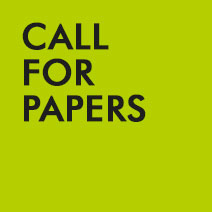Bioética, salud pública y la distinción terapia/realce
DOI:
https://doi.org/10.14422/rib.i07.y2018.002Palabras clave:
biotécnica, enhancement, realce, neurociencia, inequidadResumen
Los ingentes recursos y esfuerzos en investigación desplegados por la genética, la neurociencia y la nanotecnología exploran procesos vitales y anticipan soluciones terapéuticas para afecciones genéticas y degenerativas severas, metas aún no logradas. Recursos institucionales y militares apoyan desarrollos biotécnicos para intervenir en conductas (antisociales, de eficacia militar) y en realzar atributos cognitivos y morales tanto en personas con problemas (déficit atencional) como en individuos sanos. El realce –enhancement– aumenta inequidades en salud y empoderamiento en desmedro de los menos privilegiados. Las marcadas inequidades en Latinoamérica requieren abordar los valores comprometidos en modificaciones biotécnicas que los más desposeídos no obtendrán.
Descargas
Citas
Dublevic, V., & Racine, E. (2017). Moral enhancement meets normative and empirical reality: assessing the practical feasibility of moral enhancement neurotechnologies. Bioethics, 31(5), 338-348. DOI: https://doi.org/10.1111/bioe.12355
Eaton, M. L., & Illes, J. (2007). Commercializing cognitive neurotechnology – the ethical terrain. Nature Biotechnology, 25(4), 393-398. DOI: https://doi.org/10.1038/nbt0407-393
Elliot, C. (2005). Adventure! Comedy! Tragedy! Robots! How bioethicists learned to stop worrying and embrace their inner cyborgs. Journal of Bioethical Inquiry, 2(1), 18-23. DOI: https://doi.org/10.1007/BF02448811
Erler, A. (2017). The limits of treatment-enhancement distinction as a guide to public policy. Bioethics, (31), 608-615. DOI: https://doi.org/10.1111/bioe.12377
Farrah, M. J., & Wolpe, P. R. (2004) Monitoring and Manipulating Brain Function. Hastings Center Report, 34(3), 35-45. DOI: https://doi.org/10.2307/3528418
Garzón Díaz, F. A. (2011). La Neuroética, una nueva línea de investigación para la bioética. Revista latinoamericana de bioética, 20(1), 6-9. DOI: https://doi.org/10.18359/rlbi.1041. DOI:https://doi.org/10.18359/rlbi.990
Gordijn, B., & ten Have, H. (2017). Bioenhancement of morality. Medicine, Healthcare and Philosophy, (20), 289-290. DOI: https://doi.org/10.1007/s11019-017-9791-0
Hamdan, A. C. (2017). Neuroética: la institucionalización de la ética en neurociencia. Revista Bioética, 25(2), 276-81.
Harris, J. (2011). Moral enhancement and freedom. Bioethics, 25(3), 102-111. DOI: https://doi.org/10.1111/j.1467-8519.2010.01854.x
Hedgecoe, A. (2010). Bioethics and the Reinforcement of Socio-technical Source. Social Studies of Science, 40, 163-186. DOI: https://doi.org/10.1177/0306312709349781
Illes, J., Blakemore, C., Hansson, M., Hensch, T., Leshner, A., Maestre, G., Magistretti, P., Quirion, R., & Strata, P. (2005). International perspectives on engaging the public in euroethics. Nature Reviews/Neuroscience, (6), 977-982. DOI: https://doi.org/10.1038/nrn1808
Kottow, M. (2017). Bioética y realce moral biotécnico" Revista bioética CFM. En prensa.
LeFever, G. B., Dawson, K. V., & Morrow, A. L. (1999). The extent of drug therapy for attention deficit-hyperactivity disorder among children in public schools. American Journal of Public Health, 89(9), 1359-64.DOI: https://doi.org/10.2105/AJPH.89.9.1359
Noble, K. G., & Farrah, M. J. (2013). Neurocognitive consequences of socioeconomic disparities: the intersection of cognitive neuroscience and public health. Developmental Science, 16(5), 639-640. DOI: https://doi.org/10.1111/desc.12076
Persson, I., & Savulescu, J. (2013). Getting moral enhancement right: the desirability of moral bioenhancement. Bioethics, 27(3), 124-131. DOI: https://doi.org/10.1111/j.1467-8519.2011.01907.x
Persson, I., & Savulescu, J. (2016) Moral hard-wiring and moral enhancement. Bioethics, 31(4), 286-295. DOI: https://doi.org/10.1111/bioe.12314
Rowland, A. S., Lesesne, C. A., & Abramowitz, A. J. (2002). The epidemiology of attention-deficit/hyperactivity disorder (ADHD): A public health view. Developmental Disabilities Research Reviews, (8), 162-170. DOI: https://doi.org/10.1002/mrdd.10036
Roskies, A. L. (2002). Neuroethics for the New Millenium. Neuron, 35(1), 21-23. DOI: https://doi.org/10.1016/S0896-6273(02)00763-8
Selgelid, M. J. (2007). An Argument against Arguments for Enhancement. Studies in Ethics, Law, and Technology, 1(1).
Tennison, M. N., & Moreno, J. D. (2012). Neuroscience, Ethics and National Security: The State of the Art. Plos-Biol, 10(3), e10011289. DOI: https://doi.org/10.1371/journal.pbio.1001289
Descargas
Publicado
Cómo citar
Número
Sección
Licencia
Los autores de artículos aceptados en la Revista Iberoamericana de Bioética conservan los derechos de propiedad intelectual sobre sus trabajos y otorgan a la revista los permisos de distribución y comunicación pública de los mismos, consintiendo que se publiquen bajo una licencia Creative Commons Atribución-NoComercial-SinDerivadas 4.0 Internacional. Se recomienda a los autores publicar su trabajo en Internet (por ejemplo en páginas institucionales o personales, repositorios, etc.) respetando las condiciones de esta licencia y citando debidamente la fuente original.

















